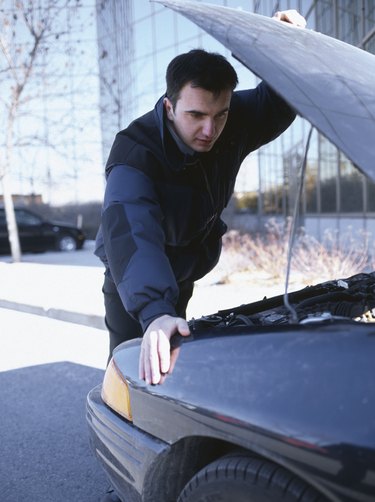
Since the early '80s, the "check engine" light has been a fixture on the dashboards of passenger cars and light trucks. It is a source of curiosity for many drivers, who have different opinions about what it means when the amber-colored engine-shaped icon lights up in their vehicle. The "check engine" light in a Chevrolet Tahoe can mean many different things, depending on whether it is flashing or steady.
Background
The vehicle "check engine" light serves as a primary indicator of a problem with the vehicle's electronic control systems. At one time, the "check engine" light was an indicator of problems primarily affecting a vehicle's emission control systems. As automotive technology evolved, the use of electronic controls in vehicles has increased, and a "check engine" light may now indicate problems with many different areas affecting a vehicle's drivability and operation.
Flashing Light
A flashing "check engine" light on a Tahoe indicates that the computer system has detected a misfire in the ignition system. A misfire is also known as a "skip" and occurs when at least one engine cylinder fails to ignite the fuel and air mixture as expected with normal operation. The misfire can be caused by a problem with the ignition system, or when the fuel system fails to deliver a flammable mixture of fuel and air to the cylinder to be ignited.
Steady Light
A steady "check engine" light means that one of the sensors in the vehicle responsible for the correct operation of the engine or other vehicle systems is delivering either no data to the vehicle's computer system, or that the data is outside the normal range that the engine computer expects. Many factors can cause this, such as broken wires or failed parts.
Systems Affected
The "check engine" light may also indicate problems with vehicle systems other than the engine and related electronics. Transmissions contain a significant number of electronic controls, and transmission problems can also turn on a "check engine" light, as can all-wheel- or four-wheel-drive systems. In some vehicles, the climate control or other comfort and convenience features can cause a "check engine" light to come on as well.
What You Should Do?
Vehicle computers can often detect problems with electronic systems long before you may notice the problem with vehicle operation. However, the concern often grows worse over time. If your "check engine" light is on steady, check to be sure that your gas cap is tight. If it stays on, you should take the vehicle in for diagnosis and repair as soon as possible, but your vehicle is generally safe to drive. If the "check engine" light is flashing due to misfire, you should stop driving the vehicle, and have it towed in for service. Continuing to operate with a misfire can cause damage to the vehicle, particularly with the catalytic converter, that can be very expensive to repair.